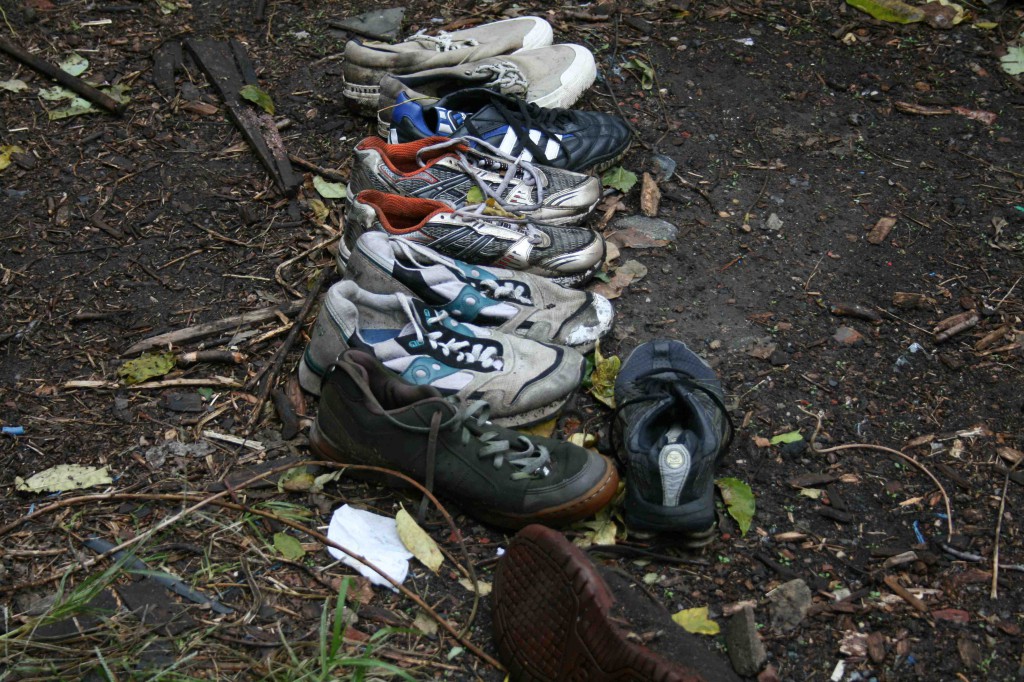Failure is a condition that is often intimate and internal, an emotionally-based point of view that is not always detectable from the outside. But architectural failures are visible: they quite literally lack the façades to hide their collapse, and so perhaps it should come as no surprise that two of the featured artists for our Failure series present—in very different ways—the physical disintegration of homes.
Over the past few months, we have featured Veit Stratmann’s documentation of the hauntingly failed city of L’Aquila. Now, in a complementary counterpoint—a counterpoint made stronger for its unplanned synchronicity—we will be introducing the work of New York based artist Gaby Steiner. Steiner describes her project, Public Home, as a book
…about a man who lives on his property without the protective walls and roof of a house. The house was demolished a few years ago due to potential collapse by New York City housing officials. Since then his furniture and personal belongings remain on the ground and in the open air…Jerzy Sulek came to New York in the 1970s from Warsaw, Poland, as a trained architect and his story today illustrates the paradox of public exposure and visibility alongside loneliness and isolation in society. His private life is exposed to the elements and on public display to everyone passing by. This situation is symbolic of the precarious position of the human condition in contemporary urban life and the vulnerability to constantly shifting relationships between public and private realms. It also poses urgent questions about ownership and personal autonomy in an era of diminishing property rights.
Steiner’s project documents the living situation of Jerzy Sulek, an architect who lives in Greenpoint, New York. A few years ago, Sulek’s house was demolished by the city because it was deemed structurally unsound. But rather than leave his property, Sulek simply moved his life outdoors, and he continues to live as though his life is still contained within the parameters of a home. Shoes lie in patches of dirt as though arranged on a closet shelf; a weight bench perches in the snow, sitting in such a state of assertive normalcy that one almost imagines it is set up in a garage or basement.
Both Steiner’s and Stratmann’s projects are about the failure of framework, about reinforcements eclipsing the very things that they were meant to support. In the case of L’Aquila, the structural salvation of the city became too imposing to leave any room for its actual inhabitants. “The city,” Stratmann writes, “is physically present and even largely accessible and potentially functional. However, that which bestows sense and form to the city—life and the temporality that life generates—has disappeared.”
And in the case of Sulek’s inverted house, the architect continues to live in a place that is no longer there, shaping his movements to adhere to the echoed constraints of phantom walls. “This property in Greenpoint,” Steiner explains, “is defined as ‘vacant land’ by the Department of Buildings in Brooklyn. The home of this man does not exist.” Sulek’s life is entirely inverted, and he lives in a state of heightened vulnerability with his intimate routines on display for any passerby until night comes and he can live unobserved under the cover of darkness. Sulek’s private life continues as it always has, but without any context to shelter it.
These two projects perfectly bookend each other: Jerzy Sulek inhabits a state of life without structure; the residents of L’Aquila, structure without life. But both projects pose the same fundamental question: how does one respond to the failure of an abandoned home?






